Cluny Museum – Paris’ Medieval Marvel
In a previous post I explained why I chose to stay in the Latin Quarter on my most recent visit to Paris. I also described a walking trip around the Latin Quarter and stopping at the exterior of the Cluny Museum, Paris’ museum dedicated to the Medieval period. This morning I’m headed back to visit the interior and hopefully gain a better insight into that period of history that was dominated by the feudal system and the Catholic church. First a bit about the history of the current building and the structures that preceded it.
The Roman Baths of Paris
When one thinks of the history of Paris a lot of things might come to mind including the early Merovingian dynasty started by Clovis, the medieval period and its sainted kings, the rise of the Bourbons, the French Revolution, Napoleon, you name it. Chances are the one thing that won’t pop into your head are thoughts of Paris as a Roman city. At that time it was called Lutetia and judging from the map below, it was no provincial backwater, but a substantial city.
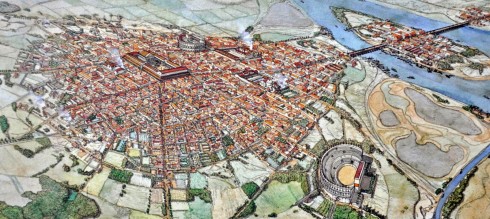
The core of Lutetia was exactly where I’m standing now on Rue St. Jacques which started out as the Roman road that crossed the island that became the Ile de la Cité. Just to the left of the precursor to Rue St. Jacques where you can see the smoke rising on the map, were the Thermes de Cluny or what were then the Roman baths. The ruins of these are still there and partially incorporated into the building the Cluny Museum now occupies. Unfortunately they are currently under restoration and I won’t be able to visit them on today’s visit, but I can see them through a wire fence along with the original main entrance to the Cluny monastery that succeeded the baths.
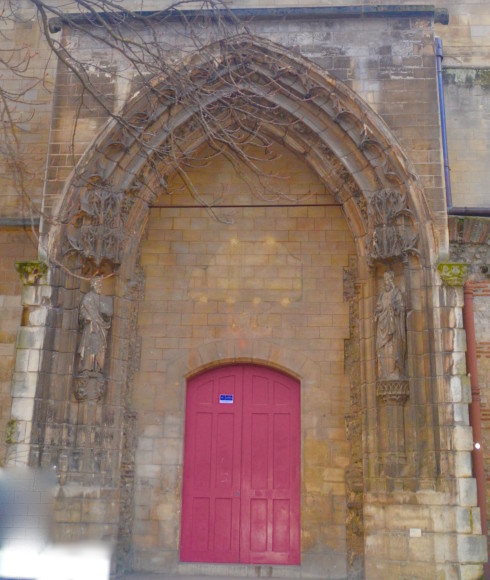
History of the Cluny Order
The Cluny order was an offshoot of the Benedictines that was founded in 910 in the town of Cluny in modern Burgundy. The Cluniac Reforms were intended to return the devotees to a simpler, more ritualistic lifestyle than had been the case in the preceding centuries. In modern parlance they were ‘tight asses’.
The building that houses the Cluny Museum was built in the 15th century by the Abbots of Cluny as their Paris headquarters and it has survived largely intact until it was designated to be the Musée National du Moyen Âge (National Museum of the Middle Ages).
The building is literally only a minute away from the apartment on Rue St. Jacques that my daughter Lenore and I have rented for our Paris sojourn. For some reason she thinks shopping is more important than seeing great medieval art so I’m on my own for this visit. The Cluny Museum sits across from Place Paul Painlevé which is described in the Latin Quarter walking tour post, but on that visit I did not notice this statue of the great thinker and essayist Michel de Montaigne by Paul Landowski just outside the small park. There’s a certain irony in this as Montaigne would be considered the antithesis of a Medieval mind. However, he actually has his back turned to the Cluny Museum and he is staring straight at the entrance to the Sorbonne. Notice that people have obviously been rubbing his feet. Apparently it’s done by Sorbonne students just before exams in the hope that a little of Montaigne’s wisdom will rub off on them. Good luck with that.
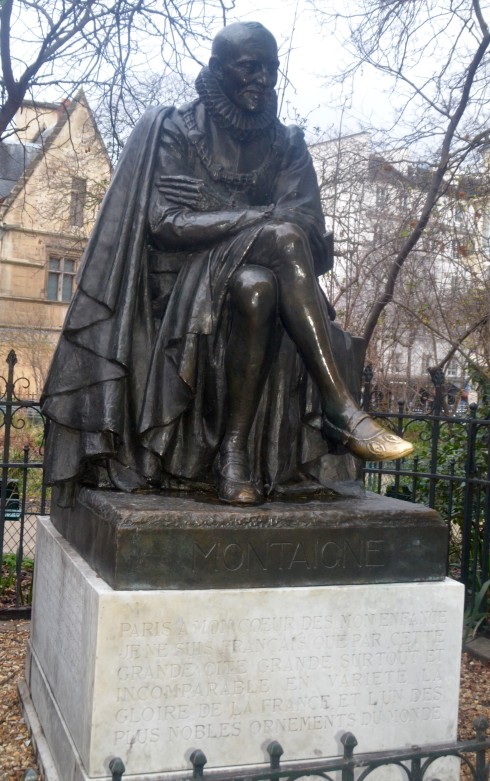
The reason I’m dawdling a bit is because the museum doesn’t open until 9:30 and I’m a bit early. Incredibly there is only myself and one other person waiting to get in. Imagine if this was the Louvre or the Musee D’Orsay – there would be hundreds if not thousands thronging the entry way. That’s what I love about traveling on my own. I can seek out and visit great places that most traveler’s either don’t know about or are too stupid to appreciate, at least that’s what I’ve convinced myself is the case. Maybe the reason nobody’s here is that it is a crappy museum. Well let’s find out.
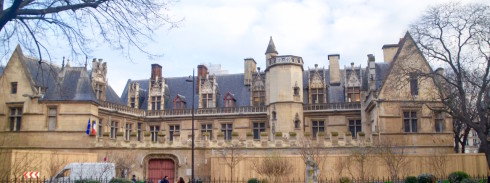
Visiting the Cluny Museum
At last the wooden doors are opened, there is a quick security check and then I’m in the courtyard. The other guest goes directly into the museum, but there’s some interesting stuff out here so I decide to linger. Ever since Victor Hugo published The Hunchback of Notre Dame, Paris and gargoyles go hand in hand. That is certainly the case with the exterior of the Cluny Museum where there are a number of neat looking gargoyles included this weird one which I have to think is St. Denis. He famously picked up his severed head and walked from Montmartre to about twenty miles outside Paris where he deposited it at the site of the future St. Denis basilica.
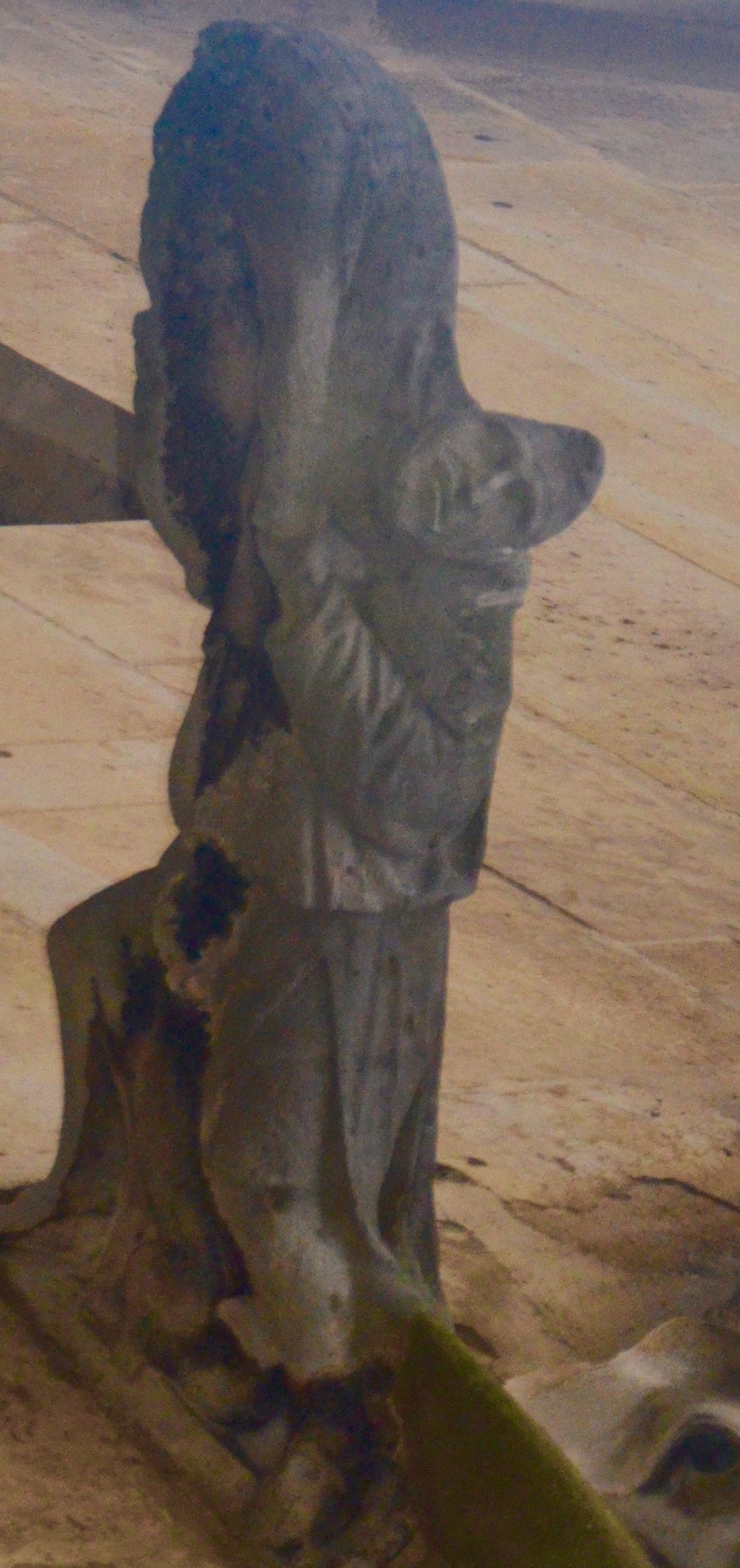
How about this one that seems to be a spout from the well that medieval monasteries traditionally had inside their walls?
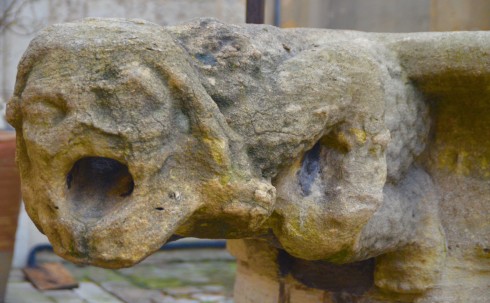
I’m a sucker for the old pulleys used to haul the water up from the well. They always seem to be there just to be photographed and this one, with its great copper patina is no exception.
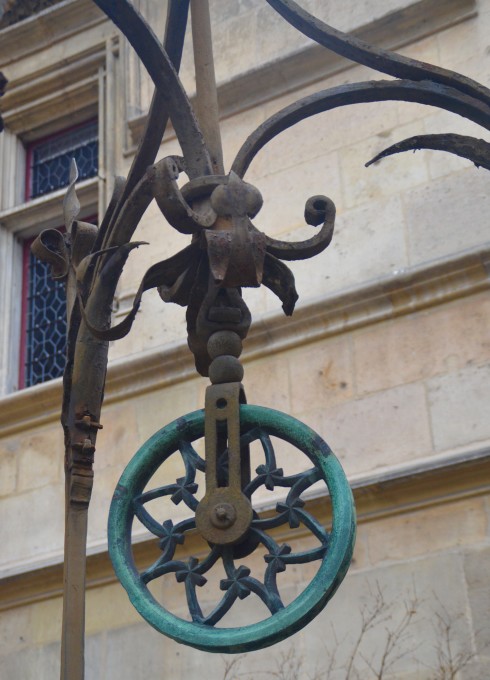
And how about these guys hanging from the sides of the gabled roof?
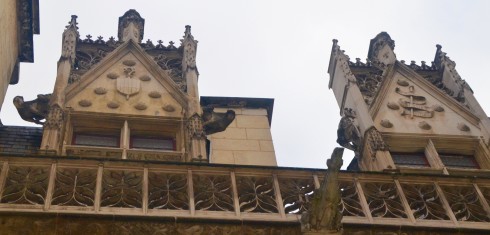
At first I thought they were monkeys, but at least this one is a harlequin and not a monkey, although he looks like he’s quite capable of monkey business. These are not gargoyles in the traditional sense in that they don’t have spouts so I have to presume they are simply architectural whims. Someone at the Cluny monastery had a sense of humour.
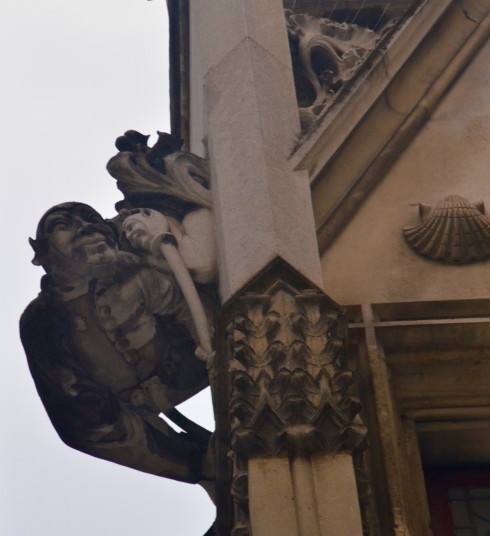
One last decorative and practical touch is this, what I presume to be a sundial of some sorts, on the side of the Cluny Museum walls. The Latin nil sine obis translates as ‘nothing without us’ which today is quite accurate. Because it’s cloudy there will be no sun’s rays and thus the damn thing won’t work.
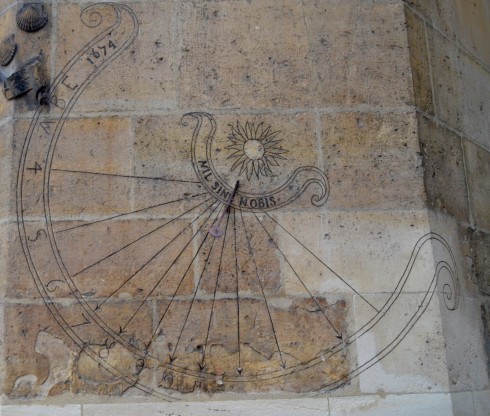
Just to the left of the sundial you can see some decorative scallop shells which is a reference to the pilgrimage to Santiago de Compostela in Spain. Pilgrims wore the scallop shells to identify that they were on a mission to visit the tomb of St. James and many started out from near this very spot. That’s one thing I love about medieval art and architecture – there is so much symbolism and seldom are things depicted as they actually are, but rather what they stand for. Dan Brown’s creation Robert Langdon would be right at home in this courtyard.
OK, I’ve been here almost a half-hour and haven’t even gotten inside. Not one other person has come in since me.
The entry fee is 9€ and another one for an audioguide. Right from the get go I know this place is going to be mind-blowing for me. For one thing I’ve got the place virtually to myself and can take the time to appreciate the items on display. Also, non-flash photography is allowed except in one spot I’ll get to. The first room I enter confirms this.
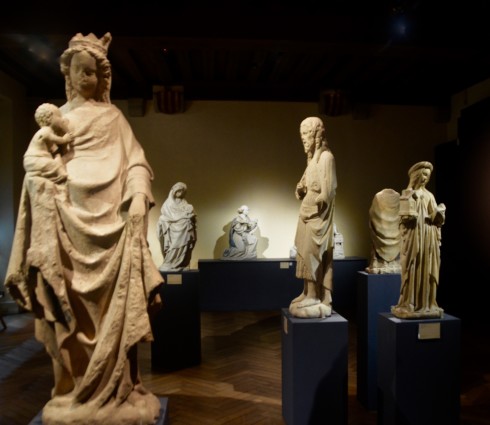
The lighting on these statues is perfect and they are set far enough apart that you can see all aspects of them from all angles, but at the same time the collection as a whole has a power to it that is arresting. This is a wonderful John the Baptist and consistent with most early medieval sculpture, the artist is unknown and probably always will be.
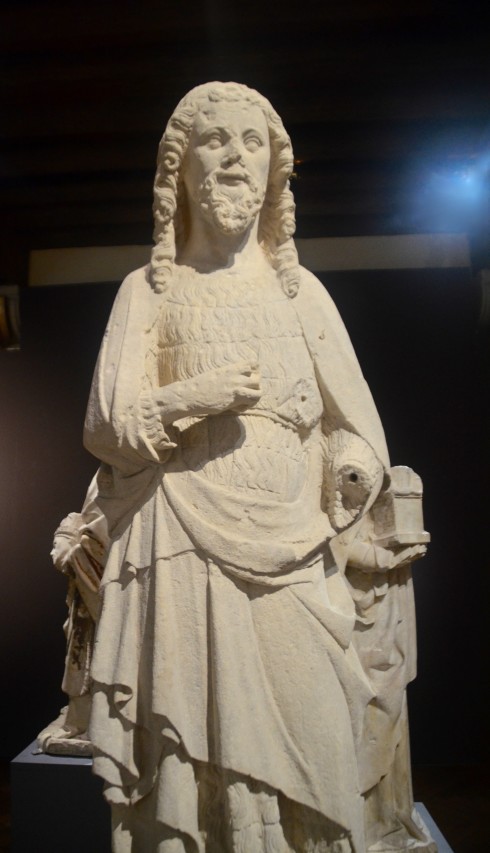
At the far end of the room there is this unusual and brilliantly conceived Annunciation. It’s from Normandy and instead of incorporating both subjects into one sculpture the artist, also unknown, has created a separate angel Gabriel and Virgin Mary. If you look closely at the interior of her robes you can see remnants of the paint that would have once adorned both statues. We are used to looking at medieval and classical sculptures as bare pieces of carved rock when as originally conceived that were anything but monotone.
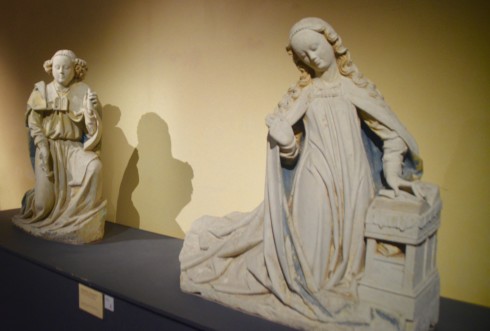
I am only going to show a few of the highlights of my visit to the Cluny Museum, but I can assure the reader that these are a tiny fraction of what is on display.
In case you think that the English were not up to snuff with their French, German and Italian medieval compatriots, have a look at this carved wooden panel. It’s the Adoration of the Magi with poor Joseph kind of an afterthought in the lower right side. Much English medieval art was destroyed on the orders of the Henry VIII who driven mad with horniness, couldn’t get a divorce and had to start his own church. Much of what Henry didn’t have destroyed, Oliver Cromwell and the Puritans did so it’s nice to see that some has been preserved at the Cluny Museum.
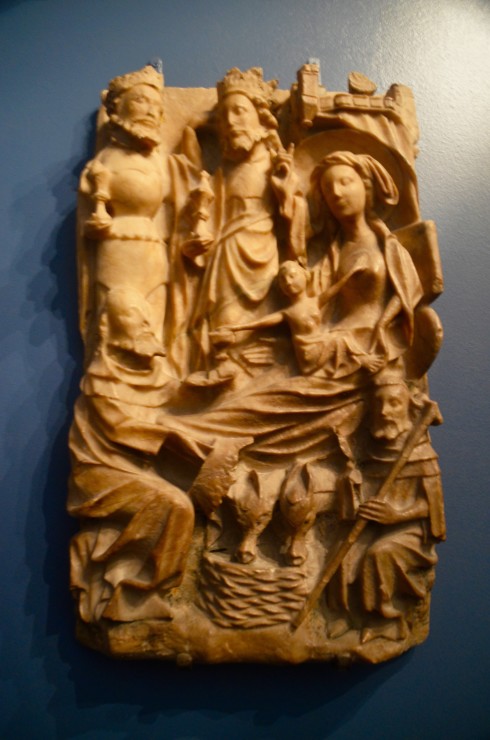
I mentioned earlier that I thought this would be a mind blowing experience for me and nowhere was this more true than in a room that contained only stained glass. The glass is backlit and like the first room, experientially, the whole is greater than the sum of the parts.
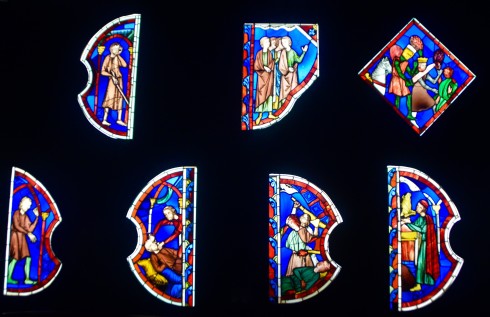
These windows are from nearby Ste. Chappelle and represent the story of Samson.They are compelling to look at up close.
Here’s poor Samson being blinded.
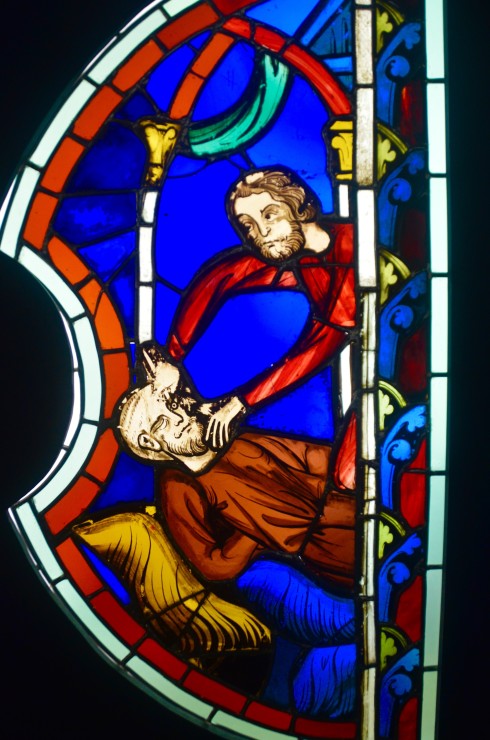
And then beheaded.
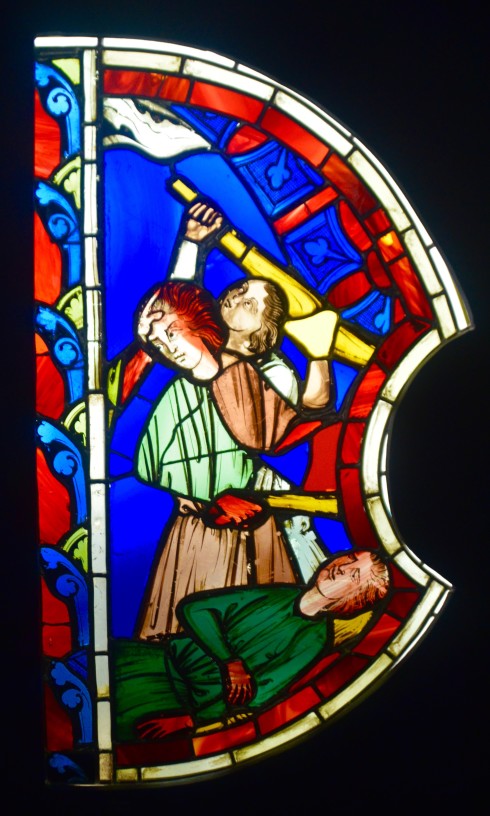
I’m not sure if this one depicts Satan on horseback, but it’s described as Job loses his Flock. It would probably have scared the hell out of any medieval serf who happened to believe in the literal truth of the Bible.
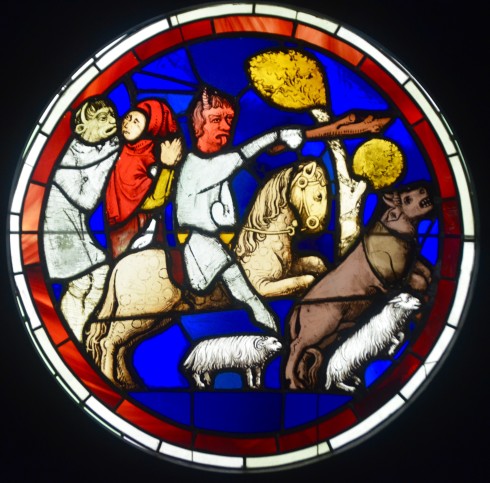
There was also this piece of stained glass from the original monastery in Cluny called Via Crucis, one of the Stations of the Cross. It is unusual for a number of reasons and the longer I looked at it the more I saw. First, Jesus is being led by a rope around his neck which is not common. Secondly, look at the various hair colours. Jesus is brown-haired and there are two blondes and a redhead. The one people they definitely do not resemble are Jews or even Romans for that matter. What are the two guys in the upper right conversing about? Whatever it is, it has distracted the guy carrying the nails.
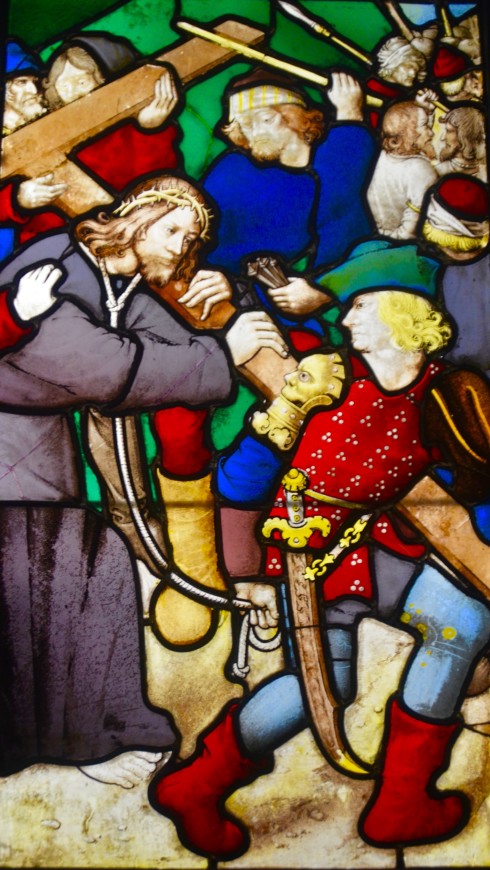
Here’s a link to a site where all of the Cluny Museum stained glass can be viewed.
While the stained glass room is small, the next room is very large and clearly was once part of the Roman baths. It is the Notre Dame room and accommodates, what to me, were the most awe inspiring of the exhibits at the Cluny Museum. These are the heads of the Kings of Judea that were once attached to Notre Dame cathedral until they were decapitated during the French Revolution. Only in 1977 were they rediscovered, excavated and given a new home at the Cluny Museum. While history records twenty-eight original heads only twenty-one were found. Believe me, as you stand in front of these majestic sculptures, you get a tingling sensation – not fear or dread, but truly awe. The best thing of course is that I had this room to myself while I know they would be packed twenty deep at the Louvre.
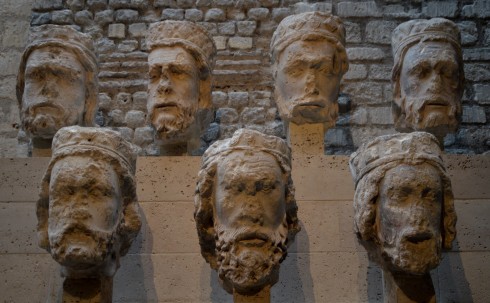
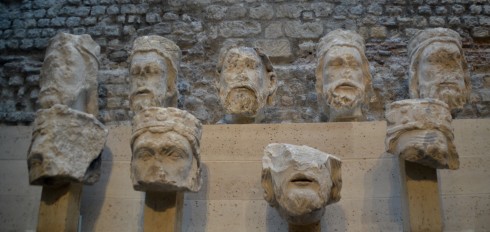
Next up is this statue of Adam, one of the few for whom the sculpture can be identified – Pierre de Montreuil, the man responsible for Ste. Chapelle.
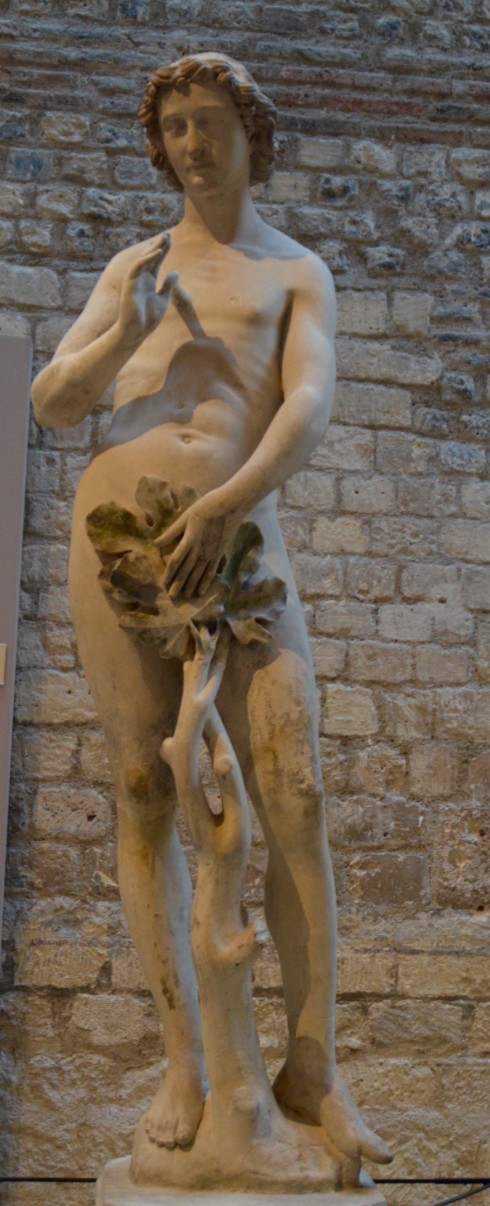
I couldn’t help but be reminded of Donatello’s David. Am I crazy or do the two share a languid litheness almost bordering on sensuality?
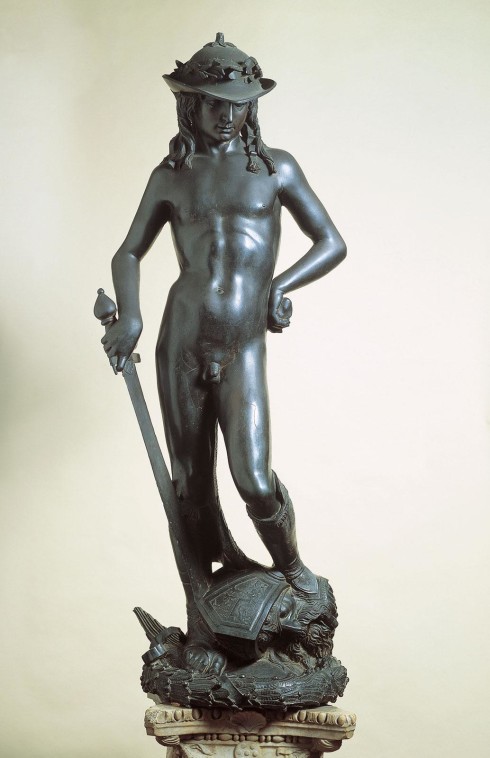
The hits keep on coming as you enter the room dedicated to the remnants of the sculptures of the Apostles that once stood in Ste. Chappelle. These are the best preserved and represent the height of gothic classism according to the audioguide, but that term is kind of oxymoronic to me.
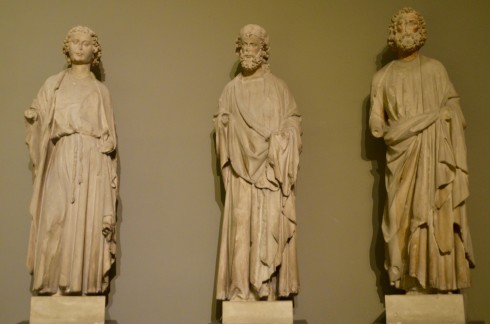
Only John on the left has been identified.
I mentioned one room where you can’t take photographs and it holds what many would consider to be the single best treasure in the Cluny Museum – the Lady and the Unicorn series of six tapestries which depict the five senses and a sixth upon which experts do not agree as to the theme. Here is what they look like and they are worth going out of your way to see.
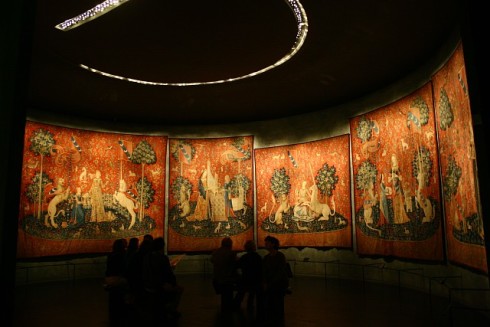
Here is the view looking down from the second story. You can see just how uncrowded both the displays and the place itself are.
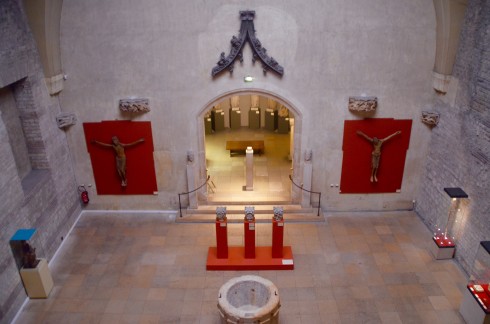
The final room is just called the Gold Room because it’s full of all things golden, including these ceremonial crowns.
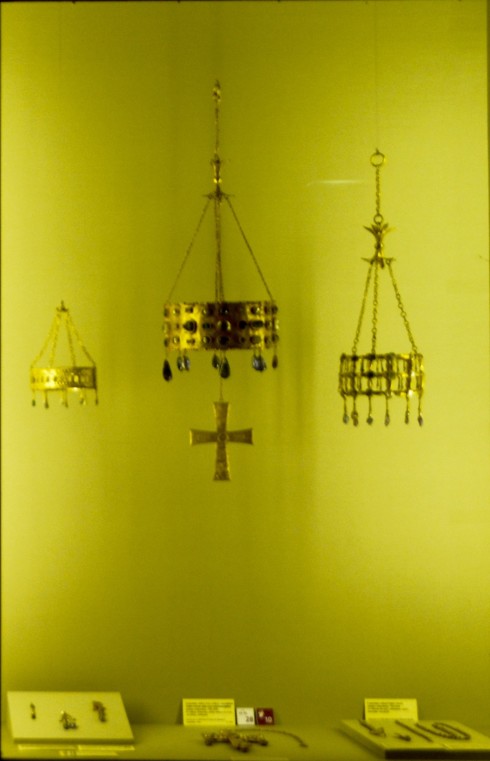
By now I’ve been here a couple of hours and reaching my limit in terms of when, no matter how what I’m looking at, my mind pretty well goes blank and I get a glassy-eyed look. The museum has been a perfect fit for my attention span.
Now I’m not suggesting you forego the Louvre or the Musée D’Orsay for the Cluny Museum, but I do suggest you put it on your list after you’ve suffered through the crowds at the first two.
Next up I’m going to complete my hat trick of Paris cemeteries with a visit to Montparnasse. Please join me.

